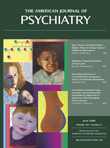Binge Drinking During Pregnancy as a Predictor of Psychiatric Disorders on the Structured Clinical Interview for DSM-IV in Young Adult Offspring
Abstract
Objective: This study explored the extent to which the high frequency of psychiatric problems reported in clinical groups with fetal alcohol spectrum disorders might also be observed in a nonclinical group of young adults and the psychiatric conditions that are related to prenatal alcohol exposure in this group. Method: From a longitudinal prospective study beginning with interviews of 1,529 pregnant women, a birth cohort of about 500 newborns was chosen to include all of the most heavily alcohol exposed plus a sampling of the continuum of alcohol exposures from total abstinence through heavy drinking. At an average age of 25.7 years, 400 members of this birth cohort were administered valid Structured Clinical Interviews for DSM-IV (SCID), including both the SCID for axis I disorders and the SCID for axis II personality disorders. Results: The odds of the appearance of six psychiatric disorders and traits were more than double in adults exposed to one or more binge alcohol episodes in utero. Three of these six odds ratios were uniformly stable against confounding: axis I substance dependence or abuse disorders and axis II passive-aggressive and antisocial personality disorders or traits. Conclusions: Prenatal exposure to alcohol may be a risk factor for specific psychiatric disorders and traits in early adulthood, even in a nonclinical group.



